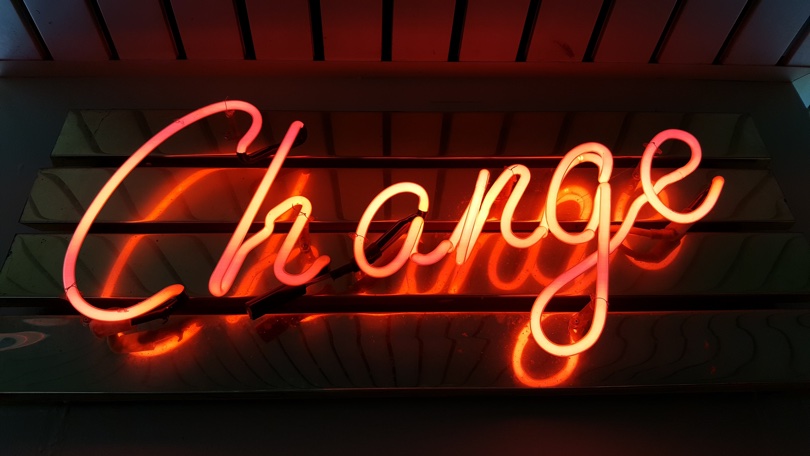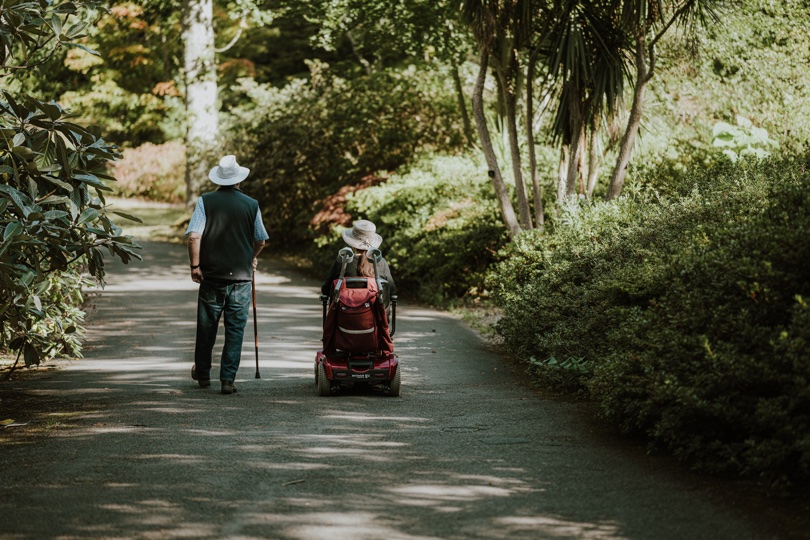
Be an Agent of Change - Check these resources to help you build more ethical designs
September 18, 2023
This article is written in commemoration of the World Interaction Design Day 2023: Ethics, Equity, +Responsibility.
The role of today’s designer goes far beyond simply creating beautiful interfaces and experiences. You can no longer design without considering the consequences of how what you’re creating impacts individuals, society and the world.
As a designer you have the power to choose if you design an offboarding process as easy as the sign up, if you want to emotionally manipulate your users to make them buy or apply for something they didn’t intend to, if you apply an accessible colour contrast and font so that more people can perceive your content, and so on.
While there’s not an official code of ethics for digital design, there’s plenty of areas designers should focus on when designing ethical products. We summed them up the following way:
Ethical Design…
- Is Transparent
- Prioritises Accessibility and Inclusivity
- Is Human-Centered
- Encourages Co-Design
- Is Sustainable
Ethical design is such a comprehensive term that you might feel quite overwhelmed. You’re probably wondering — how can I actually practice ethical design in my daily work?
Luckily there’s plenty of frameworks, tools and best practices you can take advantage of. We’ve selected a few of them and organised them here ⬇️.

Photo by Aleks Dahlberg on Unsplash
Ethical Design is Transparent
Transparency is key to an ethical design. Often pressured by stakeholders to meet business objectives, designers resort to the use of manipulative tricks intended to make users make something they don’t mean to, such as buying or signing up (deceptive patterns). Lately, privacy statements and data protection policies have been undermining people’s trust in brands. They are intentionally hard to understand and don’t explain why the company needs users information or how they will use it. They’re also virtually impossible to avoid if users really want to use the website or app, which frequently ends up with them having their personal data shared with third-parties.
Transparency builds a sense of trust, and when users trust a brand they’re more likely to be loyal consumers.
"Unless there are changes to the way we communicate data collection, algorithm decisions and advertising models, trust will continue to erode. And that’s where designers can use their skills to help take responsibility for how we are collecting and using people’s data and help restore trust."
Sheryl Cababa in “It’s time to start designing for transparency”
💡 Resources:
- 📚 We, the Data — Human Rights in the Digital Age by Wendy H. Wong — A rallying call for extending human rights beyond our physical selves — and why we need to reboot rights in our data-intensive world.
- 📚 Tragic Design by Jonathan Shariat and Cynthia Savard Saucier — Understand how poorly designed products can anger, sadden, exclude, and even kill people who use them, and what can you do to avoid making similar mistakes.
- 📚 The Ethical Design Handbook by Trine Falbe, Kim Andersen and Martin Frederiksen — With practical techniques to make honest interfaces work for digital products. Help your business grow sustainably — without dark patterns — and comply with GDPR and CCPA.
- Deceptive Patterns — A go-to-source for everything related to deceptive patterns, where you can find deceptive patterns explained with examples.
- Design for Transparency — An article by Sheryl Cababa where she proposes five principles for designing with transparency.
- Design Ethically — An ethical design framework and a library of activities to help designers integrate ethical design into their practice.
- Ethics for Designers — An online toolkit to help designers develop a set of ethical skills: moral sensitivity, moral creativity, and moral advocacy.
- The Ethics Centre — Principles to consider when designing ethical technology in order to avoid ethical missteps.
Photo by Annie Spratt on Unsplash
Ethical Design prioritises Accessibility and Inclusivity
Accessibility and Inclusivity are hot topics at the moment, particularly in the European Union (EU) where, from 2025, companies will have the legal obligation to have accessible digital products.
For a designer getting started with accessibility the first important step is fully understanding the diversity of people who use or might use your product, and how they use it (frequently resourcing to assistive technologies). You’ll probably be surprised how one simple design decision you made (let’s say picking a colour palette) can prevent a person with vision impairments from perceiving the content on the website. There’s a series of YouTube videos, TikToks and Reels where you can see how people with disabilities navigate the Web and what they commonly have to struggle with.
Then you can start learning how you can design more accessible products. In this department, the WCAG are a pretty important resource. After designing or if you’re accessing the accessibility of an existing website, you can take advantage of checklists and automatic evaluators to ensure your building it the right way. Another important way to access accessibility is conducting usability tests with people with disabilities.
“The power of the Web is in its universality.
Access by everyone regardless of disability is an essential aspect.”Tim Berners-Lee, W3C Director and inventor of the World Wide Web
💡 Resources:
- 📚 Accessibility for Everyone by Laura Kalbag — Understand disabilities and impairments and learn how to plan for, evaluate, and test accessible design.
- 📚 Mismatch — How Inclusion Shapes Design by Kat Holmes — How inclusive methods can build elegant design solutions that work for all.
- Web Content Accessibility Guidelines (WCAG) — The international standard for how to make web content more accessible to people with disabilities.
- The A11Y Project —A community-driven effort to make digital accessibility easier. You can find a checklist to help you improve the experience for everyone using your site, and a list of a series of resources (software, books, blogs, online tools) on accessibility.
- Inclusive Design Toolkit — This toolkit was developed by several researchers from the University of Cambridge and covers what is inclusive design, and why does it matter, explains the types of user capabilities, provides tools (to simulate a reduction in vision, for example), presents digital personas who highlight some of the factors that affect digital exclusion, and many other resources.
- Microsoft Inclusive Design — This methodology considers the full range of human diversity by learning from people with a range of perspectives. You’ll learn about the Inclusive Design principles, and get access to a set tools and activities.
Ethical Design is Human-Centered
UX expert William Hudson makes an interesting point on the human label and why we should talk about ‘human-centered design’ rather than ‘user-centered design’ (as it’s also referred to). By using the term ‘user’, it seems like we’re dehumanising them, making them sound just like another component of the system.
Human-centered design is about empathy and understanding each individual’s situation, with particular needs and behaviours. It’s primarily based on the direct engagement with real users by researching, understanding and interacting with them. Putting real people in the centre of the design process and designing systems according to the user’s real context of use, will allow you to create more useful and usable products.
“Design for people the way they are, not for how you want them to be.”
Don Norman in jnd.org
💡 Resources:
- Ledger of Harms — This collection by the Center of Humane Technology gathers studies and articles that show clear effects of harmful tech in today’s society, including physical and mental health, social relationships and politics.
- The Field Guide to Human-Centered Design — Everything you need to understand the people you’re designing for, to have more effective brainstorms, to prototype your ideas, and to ultimately arrive at more creative solutions.
- Humane by Design — Guidance for designing ethically humane digital products and services through patterns focused on user well-being.
- AI Ethics Cards — A tool to help teams remain human-centered while designing data-driven, intelligent products, services, and systems.
- The Tarot Cards of Tech — A tool to encourage creators to think about the outcomes technology can create, from unintended consequences to opportunities for positive change.
- The Little Book of Design Research Ethics — An IDEO guide on how to seek and share insights about people’s lives in an ethical way.
Photo by Vardan Papikyan on Unsplash
Ethical Design encourages Co-Design
What if, as a designer, you could work together with the people you’re designing for? The co-design methodology is about calling people in to participate in the design process and actively collaborate with them to come up with innovative, practical and relevant solutions. To apply co-design it’s important to take advantage of tools that spark ideas and help participants articulate them.
Co-design is more than a process. It is a social movement focused on challenging and changing inequitable power structures. Designing with, not for people.
KA McKercher in Beyond Stick Notes
💡 Resources:
- Co-design. tools — Tools and tutorials to help you get started with co-design.
- 18F Methods — A collection of tools to bring human-centered design into your project. The tools are organised into the four phases of a design project — discover, decide, make, and validate — with explanations and materials to download.
- Beyond Stick Notes — You can find all about what is co-design and what is not, the process, principles, and mindsets. You can also learn all about it in the book Beyond Sticky Notes is your guide to doing co-design, for real by KA McKercher.
- The Co-Create Handbook — Co-create is a community funded by the EU where you can access multiple resources on co-design and download this handbook for training yourself and others in collaborative design.
Photo by rafael albornoz on Unplash
Ethical Design is Sustainable
If you think the websites or apps you design are irrelevant to sustainability you’re quite wrong. Every data transmission uses electricity, which is often powered by coal and emits CO2. Choosing a green and environmentally friendly hosting, optimising image and video, using fewer fonts, offering a dark mode option will help reducing your website’s carbon footprint.
Besides using their skills to create the best possible solution for people, today’s designers also need to consider the impact of their design choices on society, and the planet. They can certainly use their skills to make a sustainable change in the world.
“Sustainability, at its core, is simply about making sure that what we use and how we use it today, doesn’t have negative impacts on current and future generations’ ability to live prosperously on this planet.”
Leyla Acaroglu in “Quick Guide to Sustainable Design Strategies”
💡 Resources:
- 📚 Design for a Better World — Meaningful, Sustainable, Humanity Centered by Don Norman — World-recognised design leader, Don Norman, reflects on how human behaviour brought our world to the brink, and how human behaviour can save us.
- 📚 Sustainable Web Design by Tom Greenwood — Understand how things like image files and coding languages can affect a website’s environmental impact, and how you can make low-carbon and more energy efficient design choices.
- 📚 Designing for Sustainability by Tim Frick — Learn how to apply sustainability principles for creating speedy, user-friendly, and energy-efficient digital products and services.
- 📚 Design is the Solution — The Future of Design Will Be Sustainable by Nathan Shedroff —An update of the 2009 book Design is the Problem where you can learn how your design process can lead to more sustainable products, with new frameworks, like ‘The Living Principles’ and ‘The Circular Economy’, and a series of new tools.
- Ethical Design booklet — An approach to socially sustainable digitalisation, with canvases to steer design in an ethical direction.
- IBM Design for sustainability — IBM designers share their guiding sustainability principles and how to apply sustainability consciousness.
- Sustainability Guide — This guide from an EU project provides inspiration and knowledge by gathering information, methods and good examples of how to use design to achieve a sustainable and circular business as well as social development.
- Sustainable Design Strategies — A comprehensive Medium article by Leyla Acaroglu on sustainable design and EcoDesign — a core tool in the matrix of approaches that enables the Circular Economy.
- Sustainable UX Network — This is a community of designers from all around the world meant to exchange ideas on how to promote and facilitate sustainability through their creative work. They’ve also prepared a toolkit with ways and methods to bring more sustainable action to your work.
. . .
Summing it up: As designers, if we want to create ethical designs, they must be transparent, accessible to all, inclusive, human-centered, sustainable and created in collaboration with people. All while dealing with business stakeholders and their business goals. Wow! 😬
While it might seem quite overwhelming, we don’t have to learn all about ethical design overnight. However, we can gradually make an effort to understand more about how to build more ethical designs and start acting as an agent of change.
Need some help creating your digital experience?
At Xperienz we strive to design simple, ethical, human-centered digital experiences that people find easy-to-use and meet their needs. We work within three major areas - Research, Strategy, and Design. Feel free to get in touch.
Tell me moreRelated Articles
-
Prompt-based — The birth of a new human-machine interaction model
The ways humans interact with technology has evolved significantly over the decades — and it’s still constantly evolving. The rise of Artificial Intelligence (AI) and natural language processing (NPL) has brought to light a new way of interaction — prompts.
-
A glimpse into the future — Here’s the UX design trends we expect to dominate 2024
Emerging technologies and tools constantly influence the way people use the Internet and interact with digital products. And as user behaviours and preferences evolve, designers must keep up with new tools and solutions to deliver interfaces and user experiences that cater the needs of an ever-demanding audience.
-
How can insurance companies make their digital products more accessible?
Millions of people who live with a disability struggle to access important information online because websites and apps are built with major content and technological barriers. And insurance websites are not an exception.
-
Barrier-free banking - From branches to mobile apps accessible for all
In the banking and financial industry, accessibility is about empowering everyone, including people with disabilities and the elderly, to enjoy bank's products, services and facilities, by making them convenient and easy to use.
-
Design for a better world - How working together and applying design approaches is improving people's lives
9 November is World Usability Day 2023. This year's theme is Collaboration and Cooperation, which intents to focus on how we can work together to create solutions, both globally and locally, to solve the world's biggest problems.
-
Be an Agent of Change - Check these resources to help you build more ethical designs
The role of today's designer goes far beyond simply creating beautiful interfaces and experiences. You can no longer design without considering the consequences of how what you're creating impacts individuals, society and the world.
-
E-commerce and Accessibility - Creating an inclusive online shopping experience
Now it’s the time for online stores to improve their website accessibility and ensure they offer an inclusive experience for everyone.
-
The future is today — How can we leverage AI to improve our UX Design work
AI has now become a big part of several areas of our lives, and UX Design is no exception. It’s actually becoming more and more applicable to the UX design process.
-
Conducting usability testing with people with disabilities
Drawing on our experience conducting usability tests with users with disabilities, we’re sharing a few things to take into account when planning and conducting research with people with disabilities and make sure everything goes smoothly and you can collect valuable insights.
-
Accessibility Compliance App - by Xperienz. A useful tool when fixing accessibility errors
To simplify the presentation of the accessibility evaluation of websites, Xperienz has created the Accessibility Compliance App. We start by doing a content inventory in which we collect all the pages of the site. Then we evaluate each page and list all the aspects that need to be fixed.
-
What does the UX future hold? - Here's the UX Design trends we expect to dominate 2023
Businesses must stay up to date on emerging user experience and interface trends so we've selected 7 top trends that are already making, and will certainly continue to make, an impact on website and app development.
-
Raising Awareness for Web Accessibility [Infographic] — International Day of Persons with Disabilities
Last December 3 we celebrated the International Day of Persons with Disabilities. To help promote a more accessible Web we’ve put together an easy-to-digest infographic about Web Accessibility.
-
Why hiring external UX services even when you have an in-house UX team?
Even if you have an in-house UX design team, there might be times when additional resources and professional know-how can be useful. Bringing in an external UX team might be exactly what you need for your company to excel in all projects.
-
Health and UX: when design has a life-saving potential
A good experience with healthcare technology and services, that is both useful, accessible and reliable, can make a huge different in improving peoples’ well-being, as well as the work of healthcare professionals.
-
Trust — Breaking or Building it Through Design
Trust is more valuable now than ever. 68% say trusting a brand they buy or use is more important today than in the past (Edelman, 2019). We live in an ever-growing digitalised world, where we increasingly interact and transact online. At the same time we constantly crave for trust-based interactions in digital environments. Questions like "Will the personal data I provide here be misused?", " Will my email be used to spam me incessantly?" or "Do I really want to share my bank details to a website I've never heard about?" have certainly come to our mind more than once.
-
Innovation Sprint — Exploring and validating a business direction in 2 to 4 weeks
During an Innovation Sprint, a new method created by Xperienz, the Sprint team joins efforts with the organisation team and in 2 weeks (minimum) they identify three strategic business directions, taking into account the organisation’s current state and structure. These innovative ideas are prototyped and tested and in the end the organisation will know the best path to follow.
-
Creating accessible digital experiences
Accessibility is of major importance for organisations who deliver web products and tools. Accessibility issues can affect not only a website’s usability for people who have disabilities but also for those who don’t. By offering accessible products, organisations will show they are inclusive, reach a wider market, be legally compliant, and offer a better user experience. For everyone.
-
"You're on Mute" - Lessons Learned After a Year of Conducting Remote User Research
After more than one year of engaging with users remotely, we want to reflect on the pitfalls of remote user research, share some of the lessons we learned and reflect on what’s going to be “the next normal” after Covid’s impact.
-
Quick & Dirty User Research
Tight timescales and budgets are no excuses to ditch user research altogether, specially when we all know it’s essential to make sure you deliver easy-to-use products. Quick and dirty research is a great way to get user insights fast and on a budget.
-
How bad metrics are hurting your business and your users’ experience
Businesses are deceiving themselves and annoying their customers as a consequence. They do so when they apply biased surveys only expecting to confirm what they want to hear.
-
UX Writing — Create better experiences with better content
Imagine a website or an app with no words. If it wasn’t for the logo, would you be able tell what this page is about? Would you know which button to click? Where navigation would take you? What you’re supposed to write in the search bar? No matter how good-looking an interface is, without words users will simply not be able to accomplish any tasks in it.
-
10 Bad User Research Practices You Will Want to Avoid
Some might think user research is as simple as watching people perform a few tasks on a website or asking them a few questions, but user research is definitely not walk in the park. Let’s go through some of the mistakes that can arise when planning and conducting research.
-
Responsive Illustrations
Can the same illustration be used the same way on a desktop screen, on a tablet or on a smartphone? How is it possible to make them look great on every screen without losing quality or the idea the brand is trying to convey?
-
UXLx Masters — Wrap-up
From 10 to 13 February attendees from 25 countries and 14 world-renowned UX experts joined online for 3 days of learning. The programme included 12 live masterclasses, 2 keynotes, 2 live podcasts, and more.
-
The Design Role in Digital Transformation
As the world keeps evolving and digital becomes more crucial to our everyday life, companies are feeling pressured to keep up and level up their game.
-
Remote UX Research — our selection of the best online tools to conduct it
As a company that focus on UX research and design, we gathered some of the best tools to conduct remote research and combined them, with our personal knowledge, in this article.
-
Why We Need Parametric UI Design Tools
In Design, parametric refers to a process based on algorithmic thinking that uses parameters and their interrelations to define a geometric form (which can be buttons, containers, panels, etc.).
-
Health Habits during the Lockdown
Xperienz, along with 15 other agencies from the global network of user research companies UX Fellows, conducted an intercultural study in 15 different countries about health and wellbeing during the lockdown caused by the current pandemic situation.





